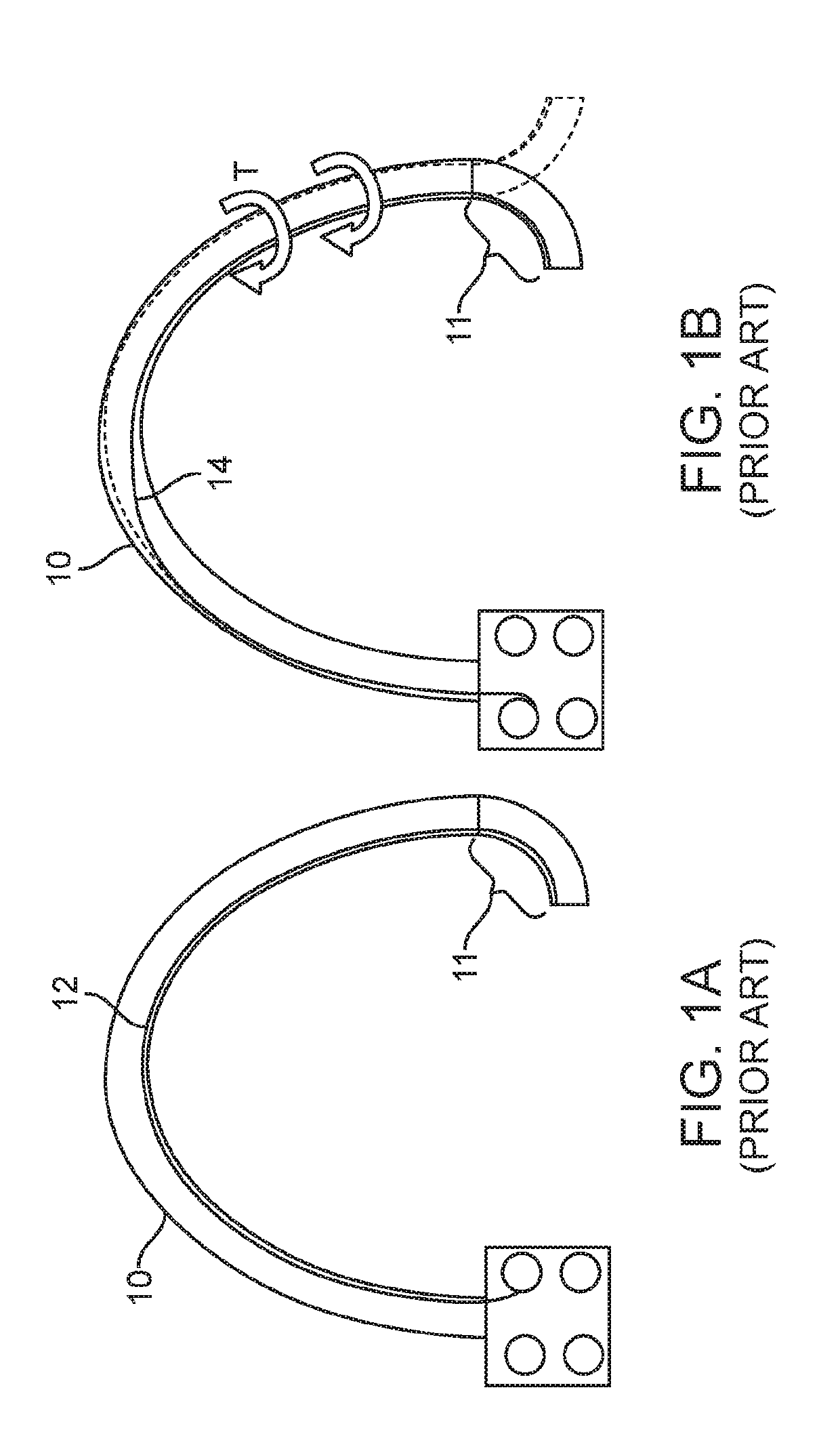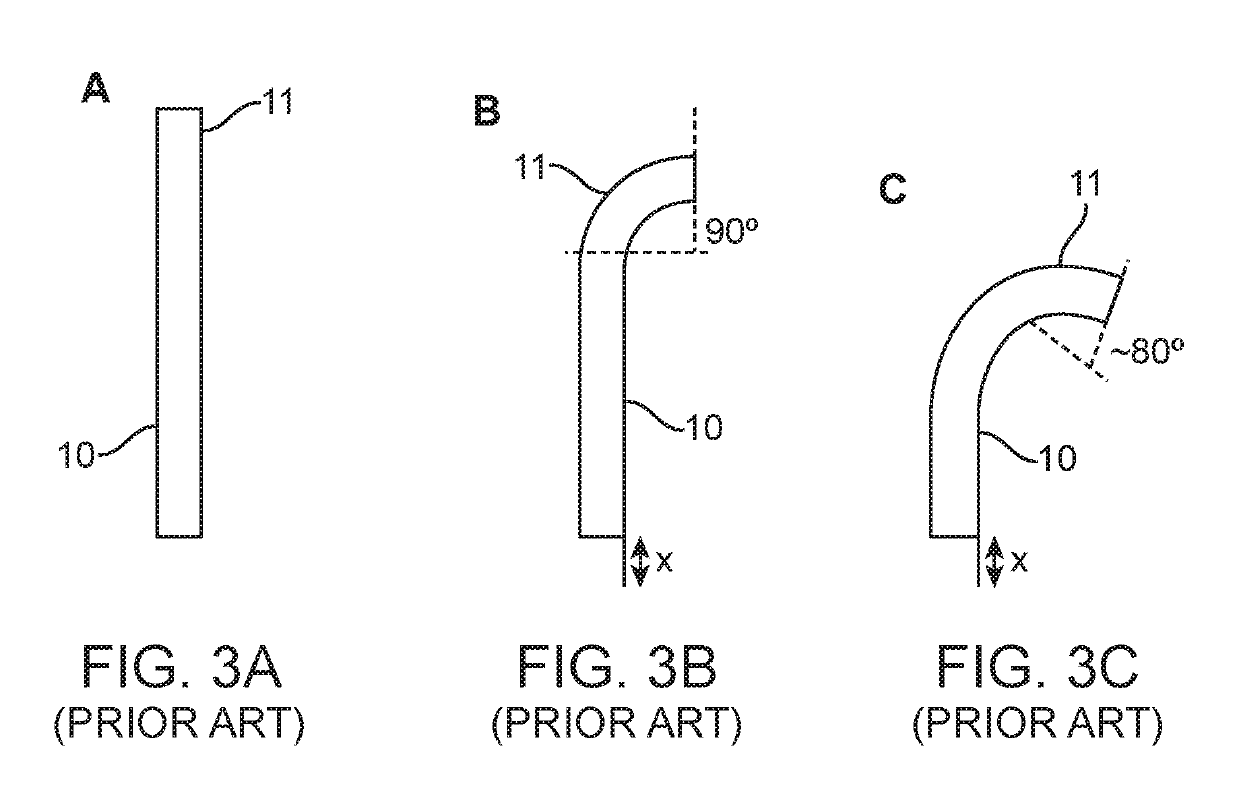Steerable catheter with shaft load distributions
a technology of shaft load distribution and catheter, which is applied in the field of minimally invasive instruments and systems, can solve the problems of catheter articulation performance, unrepeatable and inconsistent, and the shaft is compressed and/or experienced other undesired effects, and achieves the effects of reducing outer diameter (od), increasing inner diameter (id), and minimizing lateral stiffness
- Summary
- Abstract
- Description
- Claims
- Application Information
AI Technical Summary
Benefits of technology
Problems solved by technology
Method used
Image
Examples
Embodiment Construction
[0073]Referring now to the drawings, illustrative embodiments are shown in detail. Although the drawings represent the embodiments, the drawings are not necessarily to scale, and certain features may be exaggerated to better illustrate and explain an innovative aspect of an embodiment. Further, the embodiments described herein are not intended to be exhaustive or otherwise limit or restrict the invention to the precise form and configuration shown in the drawings and disclosed in the following detailed description.
[0074]To address at least some of the challenges with steerable catheters discussed above, a number of embodiments of a “polyrail” catheter will be described in detail below. In general, these embodiments include multiple pullwires (also referred to as “control wires,” or simply, “wires”), which are spaced around a circumference of a catheter along a proximal portion of the catheter shaft and then converge toward one another so that they are touching or immediately adjacen...
PUM
 Login to View More
Login to View More Abstract
Description
Claims
Application Information
 Login to View More
Login to View More - R&D
- Intellectual Property
- Life Sciences
- Materials
- Tech Scout
- Unparalleled Data Quality
- Higher Quality Content
- 60% Fewer Hallucinations
Browse by: Latest US Patents, China's latest patents, Technical Efficacy Thesaurus, Application Domain, Technology Topic, Popular Technical Reports.
© 2025 PatSnap. All rights reserved.Legal|Privacy policy|Modern Slavery Act Transparency Statement|Sitemap|About US| Contact US: help@patsnap.com



